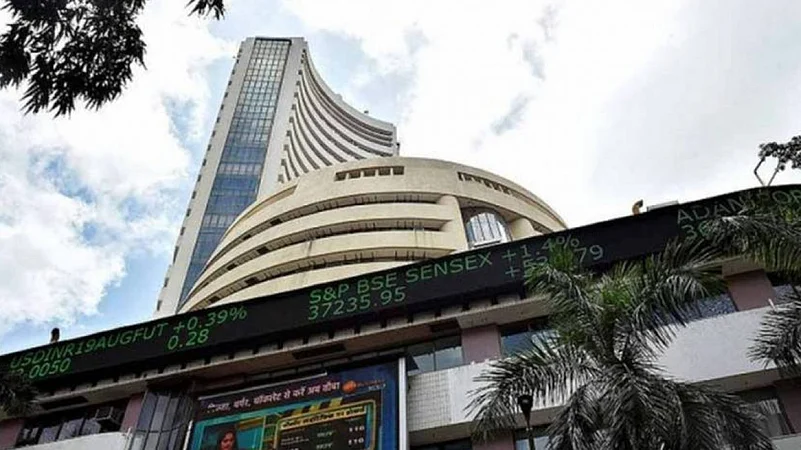In 2024, the Indian stock market gave decent returns to investors with the benchmark BSE Sensex rising 8.2 per cent and the National Stock Exchange (NSE) Nifty 50 surging 8.8 per cent.
From foreign institutional investors' (FIIs) heavy selling, weak corporate earnings in the second quarter and unfavourable conditions due to geopolitical tensions between Iran-Israel and Russia-Ukraine, delayed interest rate cuts amid persistent inflation and unexpected Lok Sabha 2024 (General) elections, several unexpected risks weighed
As we step into 2025, here's what global brokerages are saying about the outlook for India's financial markets.
CLSA: Bargain Hunting Amid Muted Expectations
CLSA’s latest India strategy report, titled Bargain Hunting for 2025, adopts a cautious tone. The capital markets firm forecasts muted returns for the Nifty, citing uncertainty surrounding the global macroeconomic environment along with a near-term slowdown in India’s economic growth and expensive valuations, which remain significantly above historical averages.
A key theme in CLSA’s outlook is affordable consumption. The report noted that increasing rural incomes, driven by government welfare spending and favorable agricultural conditions, could drive demand in this sector. However, the firm warns that elevated bond yields and overvalued currency levels relative to peers might constrain broader market performance.
The Hong Kong-based firm’s India Focus Portfolio reflects its defensive positioning. While the portfolio delivered a stellar absolute return of 186.7% since its inception in January 2021, the firm has made notable changes for 2025.
“Although our portfolio managed to outperform the Nifty by a small 30bps in 2024, it underperformed by a material 4.1 percentage points in the last quarter led by a big correction in some of our holdings. Our portfolio has outperformed in 14 of 16 quarters since its inception in January 2024 totalling a return of 186.7 per cent against 77.3 per cent for Nifty during this period,” the firm said.
It added Tata Motors, NTPC, Nestle India and Britannia Industries, citing their attractive valuations following significant corrections in 2024. However, HDFC Bank was removed, with the firm reducing its overweight in financials ahead of anticipated rate cuts by the Reserve Bank of India (RBI).
Other stocks in CLSA’s 2025 India portfolio include Reliance Industries, Tata Consultancy Services, ICICI Bank, ITC, Axis Bank, Oil & Natural Gas, SBI Life, Hindalco, Jindal Steel & Power and IndusInd Bank.
Staples and commodities have become CLSA’s largest overweight sectors, while IT, healthcare, and discretionary stocks remain underweighted, the report added.
Morgan Stanley: India Still the Market to Beat
On the other hand, Morgan Stanley took a bullish stance, calling India “the market to beat” among emerging markets in 2025. It expects an 18 per cent upside for the Sensex by December this year, highlighting strong earnings growth, fiscal discipline and a favourable policy environment as key drivers.
“With strong earnings, macro stability and domestic flows, it is hard to argue against India's investment case. Global growth, bunching up of IPOs and near-term domestic growth are risks,” said the brokerage firm.
The global brokerage firm projects Sensex earnings to grow at a compound annual rate of 17 per cent through 2027, with GDP growth expected to remain stable at 6.3-6.5 per cent. The optimism is boosted by structural trends, such as an emerging private capex cycle and a re-leveraging of corporate balance sheets.
Morgan Stanley also highlighted declining inflation and a shallow easing cycle by the RBI, projecting two rate cuts of 25 basis points each in 2025. These factors, combined with India’s low beta to emerging markets, are expected to cushion the impact of global volatility.
Its portfolio strategy favors cyclicals over defensives, overweighting financials, consumer discretionary, and industrials. The report identifies rural demand recovery as a key catalyst for consumer discretionary stocks, while a nascent private investment cycle bolsters the case for industrials. Technology stocks are also part of its barbell strategy, despite concerns over a potential US recession. On the flip side, the firm is underweight on utilities, healthcare, and materials.
While the contrasting views of CLSA and Morgan Stanley highlight the complexity of navigating India’s markets in 2025, it acknowledges global uncertainties as crucial factors behind India’s performance. With an evolving macroeconomic landscape and sectoral shifts in play, 2025 could be a market where informed decisions will separate winners from laggards. As foreign capital flows continue to shape the narrative, one thing remains clear: India’s markets, with their resilience and potential, are on the global radar.



























